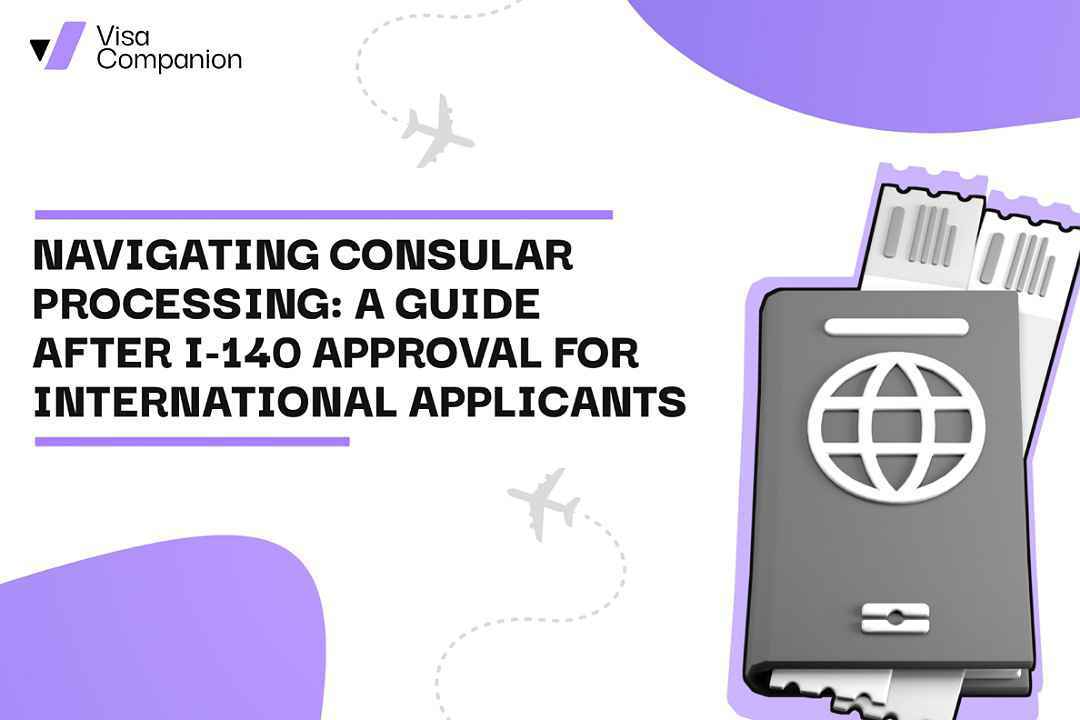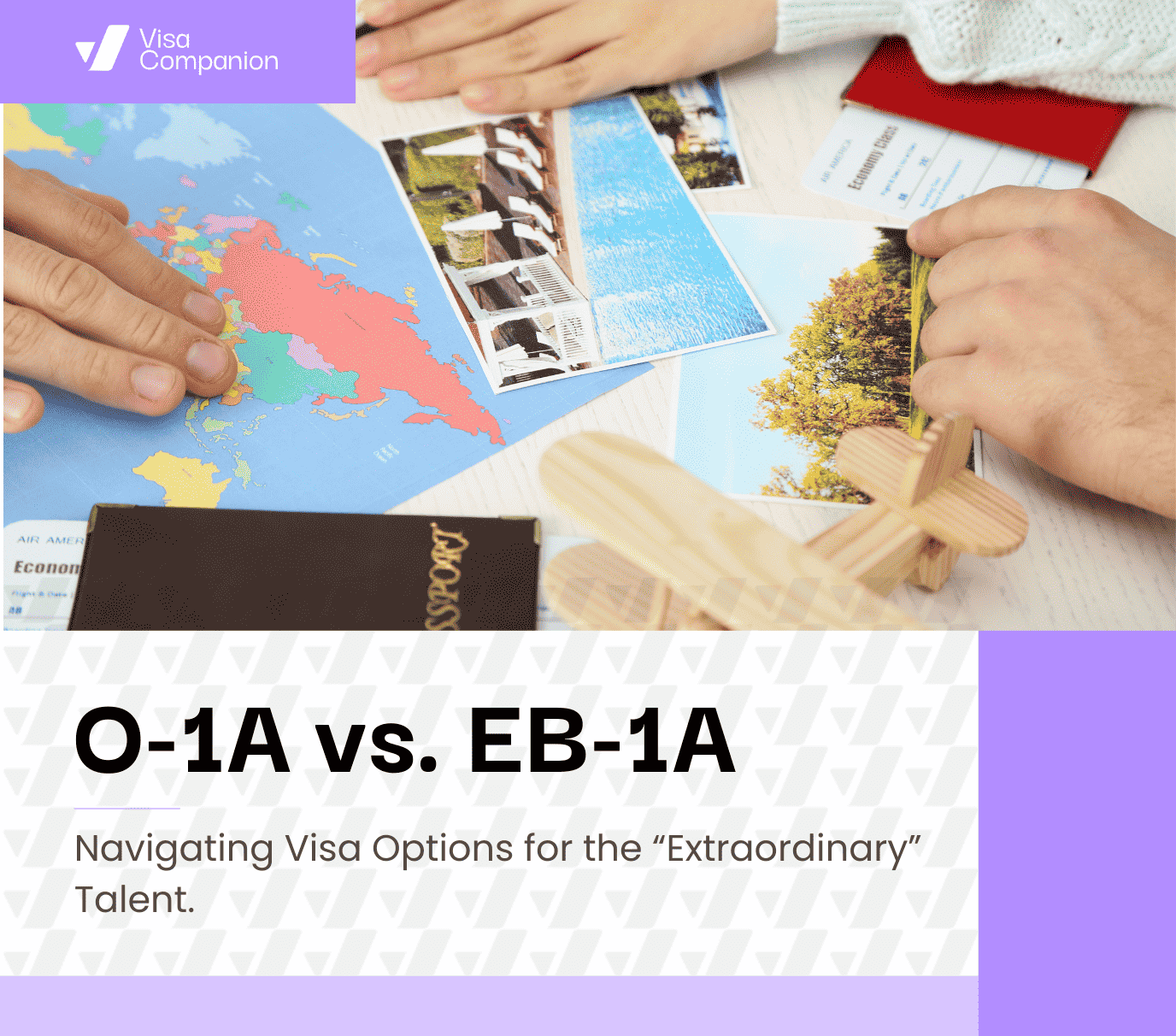NAVIGATING CONSULAR PROCESSING: A GUIDE AFTER I-140 APPROVAL FOR INTERNATIONAL APPLICANTS

NAVIGATING CONSULAR PROCESSING: A GUIDE AFTER I-140 APPROVAL FOR INTERNATIONAL APPLICANTS
After your I-140 petition is approved, the next crucial step for international applicants leaving outside the US is consular processing, which allows you to apply for your Green Card from outside the United States. This process involves a series of steps, including gathering necessary documents, attending an interview at a U.S. consulate or embassy, and obtaining your immigrant visa. In this guide, we will walk you through each stage of consular processing, ensuring you are well-prepared for this important transition to permanent residency.
The Form I -140: The Form I-140, also known as the Immigrant Petition for Alien Worker, is a crucial document in the employment-based Green Card process in the United States. This form is submitted to the U.S. Citizenship and Immigration Services (USCIS) to petition for a foreign national to work in the U.S. on a permanent basis. It is typically filed by employers on behalf of employees or by individuals seeking to self-petition, especially those who demonstrate extraordinary ability in their field (EB-1A), hold an advanced degree (EB-2), or qualify for a National Interest Waiver (NIW). Approval of the I-140 indicates that the foreign worker is eligible for the requested immigrant category, paving the way for the next steps in obtaining permanent residency.
After your Form I-140 has been approved, the next significant step for international applicants is to navigate the consular processing route to obtain a Green Card. Unlike those already residing in the United States who may apply for adjustment of status, international applicants must follow a different procedure to secure their permanent residency. This involves applying for an immigrant visa at a U.S. consulate or embassy in their home country. Understanding the steps involved in consular processing is essential for a smooth transition to permanent resident status. Let’s discuss the consular processing process for international applicants.
UNDERSTANDING CONSULAR PROCESSING FOR INTERNATIONAL APPLICANTS
The consular processing is the application process for a U.S. green card when applying from outside of the United States.
When USCIS approves your petition, your case is transferred to the Department of State's National Visa Center (NVC) for commencement of your green card process. The NVC is responsible for processing all approved Immigration petitions that concern consular actions.
The following outlines the Steps to be taken after the Form I-140 is approved for consular processing.
Receipt of Petition: After the NVC receives your petition, your case is created in the Department of State's system. Once your case has been created, you will receive an email or message containing login information to check your status and manage your case in the Consular Electronic Application Center (CEAC).
Payment of Fees: The next step after getting the message is to pay the needed fees, that is the Immigrant Visa Application Processing Fee. This fee is to be paid from a savings account number from a U.S. based bank, using the Consular Electronic Application Center (CEAC).
Form DS-260: After you've paid the fees, and your status on the Consular Electronic Application Center (CEAC) updates to “PAID”, the next step is to complete and submit the Application for Immigrant Visa and Alien Registration, that is the Form DS-260 on the CEAC. The DS-260 collects essential information about the applicant, including personal details, family background, employment history, and security-related questions. It is a crucial step in the immigration process, as it helps U.S. consular officers assess the applicant's eligibility for an immigrant visa. Once this is done, you are to print the confirmation page, which confirms that your DS-260 has been submitted, you'll come with this confirmation page to your interview.
Submit Documents: After the DS-260 has been submitted, you'll need to scan and submit your documents. The documents must be issued by the official issuing authority in your country and if it's not written in English, it must be accompanied by a certified translation. The documents needed are stated below
- Birth Certificate
- Court and Prison Records: if you were convicted of a crime, you MUST obtain a certified copy of each court and prison record, even if you were pardoned.
- Marriage Certificate
- Marriage Termination Documentation: this applies if you are divorced or the marriage was annulled. Evidence that can serve here are divorce certificates or annulment papers.
- Military Records: if you served in the military.
- Photocopy of Valid Passport Biographic Data Page.
- Police certificates.
These documents must be properly scanned, preferably in color, the front and back side of any document that has stamps, seals, or writing on the back must also be scanned, and they must be legible. Unless requested by NVC, these documents are not to be mailed to the NVC to avoid the risk of delay in processing your case. You are however required to bring the documents with you to your visa interview.
To submit these documents, you are to do so by logging into the Consular Electronic Application Center (CEAC).
After Submission: After submitting your documents, NVC reviews your case and if you've paid the necessary fees, submitted the needed documents and the required immigrant visa application, you will receive a mail indicating that your case is documentarily complete. After this step, the consulate through the NVC will schedule an interview for you if your priority date is current. In simple terms, current priority date means there is no backlog and no wait time for a green card, that is it reaches the front of the line and a green card is available. You can track your priority date on the Visa Bulletin.
Interview: After the date of the interview has been fixed, you are to take the steps below before the interview date
- Schedule and Complete a Medical Examination: you are required to schedule a medical appointment with an authorized physician in the country where you will be interviewed. This exam must be with an embassy-approved doctor, also referred to as the Panel Physician. Exams conducted by other physicians will not be accepted.
- Gather the Required Documents.
The documents needed for the interview are:
- Appointment Letter: The interview appointment letter you received from NVC.
- Passport: Must be an unexpired passport valid for six months beyond the intended date of entry into the United States.
- Photographs: Two identical color photograph(s).
- DS-260 Confirmation Page
- Supporting Documents: original or certified copies of all civil documents you uploaded into CEAC.
- English Translations for documents not written in English.
If you are unable to attend the scheduled interview, you are to contact the U.S. Embassy or Consulate as soon as possible. Failure to contact the Consulate within one year of receiving your interview appointment letter, risks your case being terminated and the immigrant petition canceled, any fees paid will not be refunded.
- Approval of Visa: After the interview and approval of your visa, you are required to pay USCIS Immigrant Fee to U.S. Citizenship and Immigration Services (USCIS) after you receive your immigrant visa and before you travel to the United States. The following persons are exempt from this fee
- Children under the Orphan or Hague adoption programs.
- Iraqi and Afghan special immigrants.
- Returning residents (SB-1s), and
- Persons issued K visas.
In summary, the consular processing stage following I-140 approval is a vital step for international applicants aiming for permanent residency in the United States. Having good knowledge of the necessary steps is key to achieving a successful outcome. By carefully adhering to the required procedures, submitting all appropriate documentation, and preparing thoroughly for the consulate interview, you can significantly improve your chances of securing your Green Card.
More Blogs

Navigating EB2-NIW and EB-1A Visa Timelines: Strategies for Efficient Processing
June 2, 2023Understanding the processing times for EB2-NIW (National Interest Waiver) and EB-1A (Extraordinary Ability) visas is crucial for applicants aspiring to obtain these U.S. employment-based preference visas.

EXPLORE THE PATHWAYS TO U.S. RESIDENCY: UNDERSTANDING THE EB-2 NIW VISA
April 22, 2023The EB-2 visa is one of the most sought-after visa classifications in the U.S. employment-based immigration system. Designed for individuals with advanced degrees or exceptional abilities in their field, this visa provides a pathway to permanent residency (Green Card) in the U.S. In particular, the EB-2 National Interest Waiver (NIW) stands out because it allows qualified individuals to bypass the need for employer sponsorship and labor certification. In this blog, we’ll focus on the EB-2 NIW visa classification—what it is, how to qualify, and the steps to apply. Whether you’re a scientist, entrepreneur, or professional with expertise in a critical field, this guide will provide the comprehensive information you need.

O-1A vs. EB-1A: Navigating Visa Options for the "Extraordinary" Talent
April 22, 2023Explore the differences between the O-1A and EB-1A visas for talented individuals immigrating to the US. Learn about the temporary, sponsored O-1A visa versus the permanent, self-petitioning EB-1A option. Gain clarity on which visa aligns best with your goals.

Empowering Your Immigration Journey with Expert Guidance
April 2, 2024Imagine the thrill of a new life in the US. It could be a groundbreaking research opportunity at a prestigious university, reuniting with family you haven't seen in years, or the chance to build a life in a dynamic, multicultural society. But before you celebrate with that celebratory American apple pie, the intimidating world of immigration laws looms. Complex legalese, unfamiliar processes with ever-changing deadlines, and the constant worry of rejection – enough to turn anyone's dream into a stressful mess.